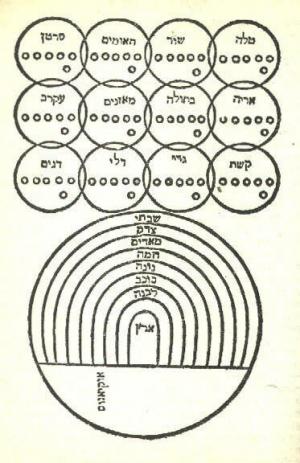Obj. ID: 35428
Jewish printed books Raziel ha-Malakh, Jerusalem, 1958

The following description was prepared by William Gross:
The book Raziel Hamalach is considered the basic book for amulets and practical Kabbalah. The tradition around the book attributes it to have been revealed to Adam by the angel Raziel. The title itself is mentioned in another magical work of late antiquity, The Sword of Moses. Critical historians regard it as a medieval work, most probably originating among the Chassidei Ashkenaz, as citations from it begin to appear only in the 13th century. Sections of it are no doubt older. The likely compiler of the medieval version is Eleazer of Worms, as "Sefer Galei Razia", which developed to what we have now as "Sefer Raziel Hamalach", including more writings written by people of various theological opinions.
The book draws heavily on Sepher Yetzirah and Sepher Ha-Razim. There are multiple manuscript versions, containing up to seven tractates. The printed version of Sefer Raziel is divided into five books, some of it in the form of a mystical Midrash on Creation. It features an elaborate angelology, magical uses of the zodiac, gematria, names of God, protective spells, and a method of writing magical healing amulets.
The first printed edition of the famous book "Raziel Hamalach" was issued in Amsterdam in 1701. This volume basically determined the texts and diagrammatic representation of many basic amulets from this time on, being endlessly copied in almost all places that amulets were written. The second edition was not published for over 90 years, but then numerous editions were issued from the Hebrew presses of Eastern Europe. It continues to be printed to this day.
This is a late edition published ten years after the declaration of the State of Israel.






